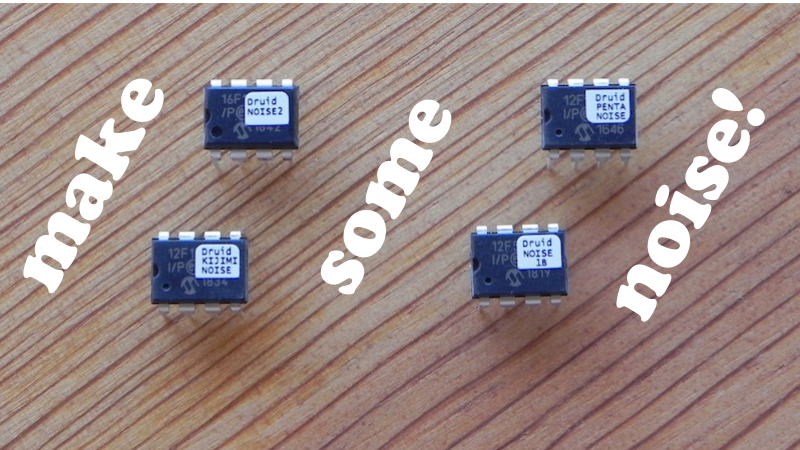
The Electric Druid range of chips now includes four noise generators, so the table below summarises the differences between them to help you select the best chip for your application.
| White Noise Outputs | Pink Noise Outputs | Digital Control? | MN5837 replacement? | |
|---|---|---|---|---|
| NOISE1B | 1 | 0 | No | Yes |
| NOISE 2 | 1 | 1 | No | No |
| PENTANOISE | 5 | 0 | No | No |
| KIJIMI NOISE | 3 (1 at once) | 0 | Yes | No |
The original NOISE 1B generator provides a single white noise output and was intended to be an upgrade for the MM5837 noise generator chip, although it wasn’t possible to use the same supply voltage as the original.
The NOISE 2 adds a pink noise source to the white noise source, so you can produce pink noise directly without needing filtering.
The PENTANOISE is intended for use where several independent noise sources are required. It provides five outputs.
The KIJIMI NOISE chip has three white noise outputs, and two digital control pins which control which (if any) of the three outputs is switched on. This allows simple digital control of noise routing or noise level.
If you want further information on any of the chips, check the data sheets below or get in touch from the contact page.
If you’re looking for something to generate a bit of randomness for a modulation signal, you might also be interested in the StompLFO, which can produce both a “sample and hold” random steps waveform and a random slopes waveform (kind of like a triangle wave, but random).